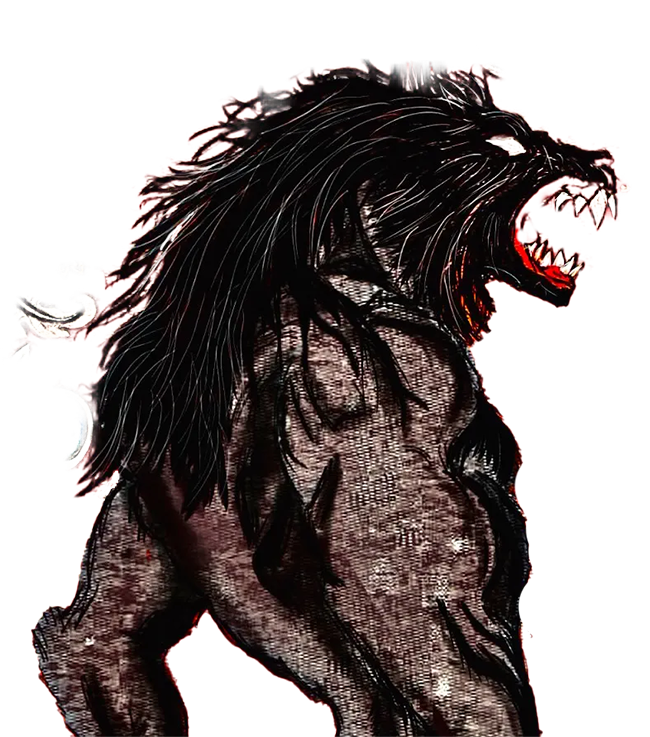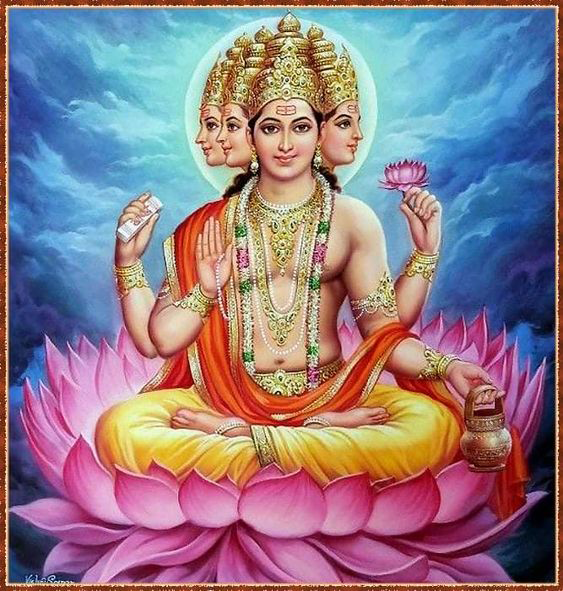Features
HOW THE GODS AND DEMONS LEARNED TO PLAY TOGETHER
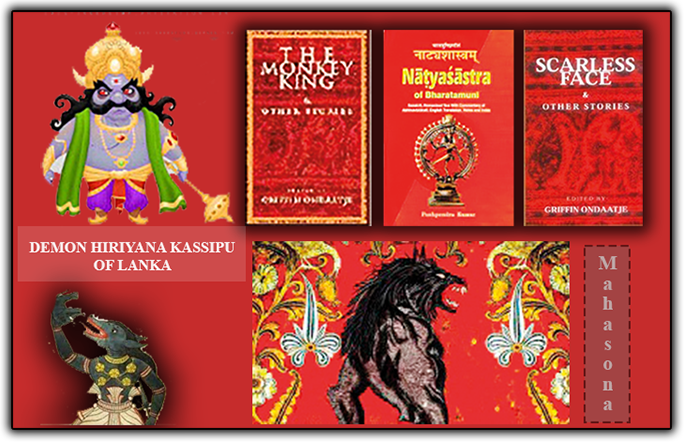
by Ernest Macintyre
Derived from chapter one, six and seven of the Natyasashtra, on the origin of drama, and published in The Monkey King And Other Stories, Canada 1995 and in Scarless Face And Other Stories, India 2006.
The great god of the Hindus is Lord Brahma and in ancient times the great book of the Hindus made up of many parts was called the Vedas which told the Hindus about life, through artistic methods. India is a very large place, and people just moved across land from one place to another, meeting other, different kinds of people as they went. Lord Brahma and his Hindus who started in the North of India began moving to the South, carrying with them the great books of the Vedas. The people of Lord Brahma moved right across the whole of Southern India and into the country now called Sri Lanka, for in those days the narrow and shallow sea that divides Sri Lanka from India was all land.
In all these Southern parts that the Hindus had come to, there lived a great many tribes who behaved in different ways from the Hindus. The tribes of the Southern lands, in their own way, hunted, and gathered fruit. We know today that it is not true that the Egyptian people who built the great pyramids or the Sri Lankan people who built the wonderful tanks and temples of Anuradhapura or the Hindus of North India of the great Vedas were superior or better or more civilised than the tribal people .
They were not because we know today that civilised means to live happily with whatever you have in the land around you, and to please their demons whenever the tribal people needed help. But the Hindus did not see it that way. The Hindus thought they were more civilised, superior to the tribal people of the south.
And this story of ours began because God Indra, who worked under Lord Brahma, had been worried and angry for some time about strange noises coming from the direction of the forests where the tribal people of the southern lands lived. Not long after the sun had set he would hear, quite distinctly, long and piercing shrieks, the beating of drums, wailing, chanting and the stamping of feet. One night he decided to see for himself. Moving up silently to a large bush behind which he could hide, he peered through its leaves at the forest clearing beyond, and saw the tribal people behaving in a way that he had never seen before.
There was a woman seated on the ground looking very ill. About ten yards in front of her there were two pillars made of the trunks of banana trees and a third banana trunk was fixed to the top of the other two so that it looked like a kind of doorway. On both sides and on top of this doorway were tied great bundles of jungle leaves and branches so that you couldn’t see what was behind the floor. All the tribal people had come there and were standing on either side of the sick woman as well as behind her, but all of them were looking at the doorway made of banana trunks and jungle branches.
Between the woman and the doorway two men were leaping into the air as they danced with large flaming torches held in their hands. Another man sat close to the doorway beating a drum for the dancers. A fourth man, dressed in jungle leaves like all the others, moved about near the doorway shouting and singing something that Indra couldn’t understand. And then, all of a sudden, as this man shouted very loud, and the drum was beaten louder than ever and the dancers leapt in the air higher than ever, a terrible shriek was heard from behind the doorway.
Everyone stopped what they were doing. In the silence the shriek was heard again and through the door there leapt a huge and terrible looking demon with the head of a bear and the body of a human being. The man who had been chanting and singing shouted “Mahasona! Mahasona!” and hearing this Indra knew that the name of the demon was Mahasona.
Immediately the singing man asked the demon Mahasona:
“What do you want to make this woman well again?”
Mahasona replied, “I want a baby to take away, and I will make this woman well again.”
“No! No! A baby human cannot be given to you,” said the singing man, with great feeling.
“Then what will you give?” asked the demon Mahasona.
“I can give you a small chicken that is already dead,” said the man.
“Then give me the small chicken that is already dead,” agreed Mahasona the demon.
The singing man then walked up to a small basket lying on the ground close to where people were standing. From the basket he took up a little dead chicken. But as he held it up to show Mahasona the demon, Indra struck. Indra had been getting angrier and angrier as he watched these things that the tribal people were doing. Being a god of the Hindus, he thought that these things were evil and uncivilised.
Indra rushed forward with his famous staff. Indra always carried a tall staff and he used it on his enemies. He attacked the demon Mahasona who then ran back through the door to enter the jungle again. All the people and dancers started screaming and running in all directions. Inside the jungle Indra caught up with the demon Mahasona and gave him such a beating that he fell to the ground, screaming. But Indra did not stop there.
That night he went full speed through the whole jungle attacking and beating all the demons with his staff, hundreds of them. By morning all the demons had been well beaten and Indra’s victory over the demons became famous with all the Hindu gods and with the Lord of all gods, Brahma.
The next morning after Lord Brahma had eaten his breakfast he called up Indra to say thank you for his great defeat of the demons of the southern tribal lands. But the moment he saw Indra he knew that Indra was not fully happy with what had happened. Indra had a thoughtful look on his face. Brahma asked him, “What is the matter?”
Indra, speaking slowly, said, “We will never be able to live with these people happily simply by defeating their demons, because their demons belong to them. We must win the hearts and minds of the tribal people and their demons.”
“Yes, I know that,” said Brahma.
“But how do we win their hearts and minds?” asked Indra.
Brahma gave a deep sigh, waited a moment and then spoke.
“Ah, if only they could listen to our great Vedas. If they listened to our holy books they would surely give up their evil ways.” Brahma sighed again: “But these are Sudras, and you know that Sudras are not allowed to listen to the Vedas.
Because Brahma spoke slowly Indra had time to think while he was listening, and suddenly he got an idea from what Brahma was saying. Indra was very excited.
“Yes, Lord Brahma, but that rule is only for the Vedas that we now have!” Brahma looked curiously at Indra. “So what do you mean? “Indra spoke quickly. “If we make another, new Veda especially for the tribals, then they can learn our good ways from this new Veda! They are not allowed to listen only to the first great Vedas. They can listen to a new one.”
Brahma turned his head to look more closely at Indra. It looked as if Indra was right, for Brahma said a slow “Hmmm.” And then he asked, “But how do we do this? You see, Indra, we must know more about these tribals before we can make a new Veda for them. Now tell me, last night when you watched them from behind the bush, what were they doing?”
Indra then told Brahma all about the sick woman, the crowds around her looking at the doorway of banana trunks and jungle branches, the dancing men with torches in their hands, the music of the drum, the singing of the man who offered a little chicken to the demon Mahasona, the shrieking demon and how it suddenly entered from behind the door. Brahma then thought for a long time about what Indra had described to him, keeping his head up to the sky, using his left hand to hold his chin. The fingers of his right hand kept tapping on his stomach. Finally he turned his head back to Indra with a very knowing look in the small eyes inside his face. He spoke:
“So you say that these Sudras can actually sing?”
Indra nodded.
“You also saw them dancing?”
Indra nodded again.
“And they made music with the drum?”
“Oh yes!” said Indra.
“Hmmm – and from what you have told me I can see that these people have feelings, like our Hindu people.”
“Very much more, I think,” Indra said. “They don’t think carefully like us, they show too much feeling. I saw it last night from behind the bushes.”
Brahma now rose very slowly, and stood a little while longer in silence and then said, “I think I have an idea.” He thought a little again and said, “And you say that the sick woman and the people watching this were on one side and the dancing men, the singing man, the drummer and the demon Mahasona were on the other side?”
“Something like that,” said Indra.
Brahma went on, “And then the demon entered from the door on his side?”
“Yes,” said Indra, wondering why Brahma was so interested in the way things had happened that night.
After another long silence, Brahma said, “Come and see me tomorrow at this same time.” As Indra bowed and went away Brahma sat down again. But now he crossed his legs in a special way and folded his arms over his chest also in a special way, which helped him to think very, very deeply. The Hindus call this Yoga. He remained like this for many, many hours.
When Indra went the next morning Brahma was standing up, waiting for him. As soon as he saw Indra he said, “I have done it!”
“What?” asked Indra as his eye fell on a large book in Brahma’s right hand.
“I have made a new Veda from which the Sudras can learn our good ways,” said Brahma waving the big book.
Brahma and Indra then excitedly spoke these lines:
Indra: Tell me about it.
Brahma: They will learn things, not by listening to the new Veda as we did with the old Vedas, but by playing with the help of the new Veda.
Indra: By playing?
Brahma: Yes, the new Veda tells them how to play, and when they play people will learn wise and good things.
Indra: What is the meaning of to play?
Brahma: To play is to pretend, to imitate.
Indra: How do they pretend?
Brahma: They will play or pretend in a way that they are already used to.
Indra: What is that?
Brahma: Like what you saw that night when you were hiding behind the bushed. That is why I wanted you to tell me what they were doing that night. You see, Indra, they are used to having people on one side of the ground watching something going on the other side with dancing, music, singing, chanting and speaking.
Indra: Yes.
Brahma: What you saw that night was real, but my new Veda is going to use the same way of doing things for playing or pretending.
Indra: What will they pretend or play? I hope it will not be the things I saw that night. Even pretending those things will be terrible.
Brahma: Ah no, it won’t be those things.
Indra: Then what?
Brahma: What they will pretend and play are the stories from the Mahabharata and the Ramayana and otherwise, and good books of us Hindus. And they will be happy to play these stories because they already know a little of how to play.
Indra: They already know how to play?
Brahma: Sometimes you don’t listen to me carefully enough. I told you a moment ago that what you saw that night was real but I am going to ask them to do it the same way for playing the stories of the Mahabharata and the Ramayana.
Indra: Is that the new Veda in your hand?
Brahma: Yes. ,
Indra: May I please look at it, Lord Brahma?
Brahma: Yes, in a moment.
Indra: Why is the book so big, Lord Brahma?
Brahma: Because there is a lot in it for dancers to learn, for musicians to learn, for actors to learn.
Indra: Actors?
Brahma: Yes, because when they play these stories they will only pretend or act as if they are real, they will be called actors.
And so the first book in the world about how to make a play was given by Lord Brahma to Indra about two thousand years ago. It was called the Natyasastra. “Natya” means play and “sastra” means the art, in the ancient Sanskrit language of the Hindus.
Now Indra had the book in his hand, and Brahma could see that he was very excited by the way he thanked Brahma.
“Oh, Lord Brahma, thank you for the Natyasastra. Now the Sudras, have a way of leaning our good ways, just by playing.”
But Lord Brahma had some advice for Indra when he said:
“But the Natyasastra can be used by everybody. It teaches us Hindus as well as the Sudras why and how to play.
And now you have work to do, because I have given you only the book on how to do a play. You will now have to go and do a play to see how it works. So go now and do the first play in the world for all to see.”
Indra hesitated, asking, “But what shall this world’s first play be about?”
“Ah! I have thought about that too,” said Brahma. “Because all this began when you peeped through the bushes, saw their ways and attacked the demon Mahasona and all the other demons that night, let the world’s first play be about Indra’s defeat of the demons!”
Indra was very pleased. He got the help of a famous wise and learned old Hindu by the name of Bharata Muni to select actors, train them and do the play. So the day of the world’s first play came and it was performed at a big open place on a moonlit night. But when the play began, a very strange thing happened. All the demons who had been beaten by Indra, except Mahasona, had got well again and were at the play. Mahasona, who was still very sore, remained at home. And only one of the other demons knew that Mahasona was not at the play.
His name was Hiranya Kassipu, like Mahasona a famous Lankan demon. In those days when Lanka and India were not separated by sea, these two demons roamed the entire subcontinent. On the way to the play Kassipu had stopped at the home of Mahasona and seen him in bed. When the first scene of the play began, an actor dressed like Mahasona came shrieking in and an actor dressed like Indra rushed forward and acted as if beating the actor dressed like Mahasona.
At this moment the hundreds of demons who had come to see the play got very angry and excited because they thought that the whole thing was real. They had looked around, and seeing that Mahasona was not with them in the audience, thought that it was the real Mahasona, their pal, who was being beaten by the real Indra. They thought that the defeat of the demons was happening again, a second time! So all the demons except Kassipu rushed forward and beat up the man playing Indra and smashed up the whole play.
Only Kassipu remained calm, seated on the grass. He knew it was not real. But strangely, though he knew it was a play, he felt very sad to see even an actor dressed like Mahasona beaten up.
Indra, very upset that the world’s first play had been smashed up, rushed to Lord Brahma that very night and asked what should be done. This time Brahma did not have to go deep in thought. The answer was very clear.
“Protect the actors,” he said.
“How?” asked Indra.
“Build a house and do the plays inside, a playhouse, a theatre!” replied Brahma.
Vishvakarman, the architect of the gods was summoned and told the story. And so the world’s first playhouse was built with four strong walls and a very safe roof. At one end on a raised platform the actors acted, coming in and going out through a door on the stage that led, at the back, to a resting room. At the other end of the room the people sat and watched the play.
But Indra and the other gods were still unhappy. By protecting the actors they were also keeping the demons and the Sudras out of the theatre. So they all went to Lord Brahma and explained, “Oh, Lord Brahma, you gave us the Natyasastra and from it we have learned the art of acting and how to do a play. And you did all this in the first place to teach our good ways to the Sudras and their demons. But they are now being kept out of the theatre. We can see them hanging around suspiciously outside the walls, wondering what is going on inside. It is all very sad.”
From the way Brahma looked at them they could see that he had been thinking in the same way.
“Yes,” he said, “and that is why I have asked all the demons to meet me tonight. All of you must come. I have asked the wise old Bharata Muni who trained the actors to explain to the demons what a play is.”
That night when all the gods and demons met, Bharata Muni began by saying, “You demons attacked the play last night because you thought it was real. Plays are not real, they are acted.”
Immediately the demon Kassipu said, “But I knew that Mahasona did not come for the play. I knew that two people dressed up like Mahasona and Indra were acting, and yet I felt too sad to see the demons being defeated.”
“So did you also attack the play as the other demons did?” asked Bharata Muni.
“No, I did not. I felt sad but did not do anything,” said Kassipu.
“Ah! So you behaved differently from the other demons who thought it was real, and I will tell you why. Listen, O demons! It is because of you that people will always think that they feel real feelings whenever they see a play,” exclaimed Bharata Muni.
“Why is that?” asked the demon Kassipu. “What have we got to do with it?”
“To make this new thing called a play, to make drama, Lord Brahma took something from you demons and something else from the gods,” explained Bharata Muni.
Kassipu then asked, “What did Lord Brahma take from us?”
“Feelings, emotions” said Bharata Muni.
“How is that?” inquired Kassipu.
Bharata Muni had to explain carefully. “Lord Brahma heard from Indra about the woman who was ill that night. How the tribal people called you demons to make her well. How there was such a lot of feeling when you asked for a little takeaway baby but the people refused and offered you a dead takeaway chicken instead. Lord Brahma saw that the tribal people and their demons were full of feelings in a way that the gods are not, and he knew that a play must have a lot of feeling and that will come from you, not from the gods.”
“Then what have the gods given to this new thing called a play?” asked the demon Kassipu.
“They have given something as important as feelings,” said Bharata Muni. “The gods have done something to stop people from letting their feelings make them think that these plays are real, and get excited, and do things such as you all did when you smashed up the world’s first play.”
“How did the gods do that?” inquired Kassipu.
“By beautiful music, beautiful songs, beautiful dances, beautiful words, all taken from their great books the Vedas,” said Bharata Muni, smiling.
“I do not understand,” Kassipu complained.
Bharata Muni explained again carefully. “You see, demons, in real life if I am going to kill someone I will not do a beautiful dance and do it. I will not sing a beautiful song and do it, I will not use beautiful
words when I am doing it. And so, when I do it this way in a play you will have strong feelings but will not get excited and get up and try to stop the actor from acting in a way as if he is killing the other actor. Do you understand?”
All the demons smiled, and said together, “Yes, now we understand.”
The next night they all got together and did another play, also about gods and demons and this time there was no disturbance. They knew that the great feeling in the play came from the demons and the beauty in the play came from the gods. They learned to play together. And now they could play together out in the open spaces or inside theatres.
EXTRACT FROM REVIEW IN THE INDIAN EXPRESS.
Scarless Face & Other Stories: review Sunday, December 25, 2005, Indian Express
Ernest MacIntyre’s “How the Gods and Demons Learned to Play Together”, my pick for the best story in this collection, comes from the Natyasastra’s myth about the birth of theatre – but it is equally about empathy and perception, about how quick we are to pass judgement on those who are different from us.
Features
2025 Budget: Challenges, hopes and concerns
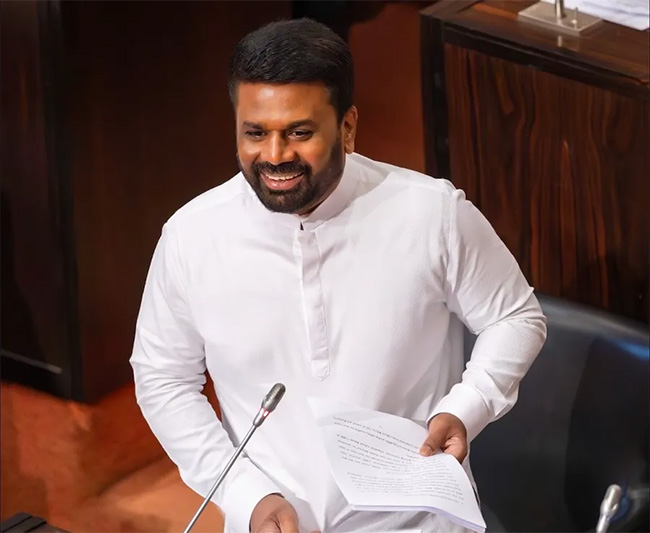
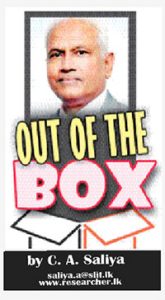 Sri Lanka’s recent government budget has sparked both hope and concern. While some see it as a positive step toward improving the country’s economy, others worry about whether the government’s proposals can be successfully implemented. This analysis explores the budget’s approach and what it could mean for the country’s financial future.
Sri Lanka’s recent government budget has sparked both hope and concern. While some see it as a positive step toward improving the country’s economy, others worry about whether the government’s proposals can be successfully implemented. This analysis explores the budget’s approach and what it could mean for the country’s financial future.
Credit Rating Improvement and What It Means
Fitch Ratings recently upgraded Sri Lanka’s credit rating, moving it from a risky “Restricted Default” (RD) to a “CCC+” rating. This shows that the country’s financial situation is improving, though it still faces a high risk of default. The government aims to increase its revenue, especially through trade taxes and income tax, but experts warn that the success of these plans is uncertain, particularly when it comes to lifting restrictions on imports.
Economic Democracy and Market Regulation
The government claims that this budget is based on the idea of “economic democracy,” aiming to balance market forces with government control. While it promises fairer distribution of wealth, critics argue that it still relies on market-driven policies that may not bring the desired changes. The budget seems to follow similar strategies to past administrations, despite the government’s claim of pursuing a new direction.
The current government, led by a Marxist-influenced party, has shifted its approach by aligning with global economic institutions like the International Monetary Fund (IMF). This represents a departure from its previous, more radical stance. The government’s vision focuses on rural development, support for small businesses, and an export-driven economy, continuing strategies from previous administrations rather than implementing drastic changes.
Stability and Continuity in Policy
One of the more positive aspects of the budget is its consistency with the fiscal policies of the past government. Sri Lanka’s economy has suffered from sudden policy changes in the past, often triggered by political transitions. By maintaining a steady course, the current government seeks to ensure stability in the recovery process, despite criticisms from political opponents.
Sri Lanka continues to face significant financial challenges, including a large budget deficit. The government’s spending in 2025 is expected to exceed its revenue by about LKR 2.2 trillion, leading to a deficit of around 6.7% of GDP. To cover this gap, the government plans to borrow both locally and internationally. However, debt repayment remains a major concern, with billions needed to settle existing obligations.
Tax Revenue and Public Spending Issues
Sri Lanka’s tax collection remains critically low, which worsens the country’s financial troubles. Tax evasion, exemptions, and inefficient administration make it hard to collect sufficient revenue. The government has raised VAT to 18% to boost income, but this could increase inflation, further harming families’ ability to afford basic goods. Additionally, corruption in public institutions continues to drain state resources, preventing effective use of funds for national development.
The Auditor General’s Department recently uncovered financial irregularities in several ministries, reinforcing concerns over systemic corruption.
Sectoral Allocations, Budget Inequities and Falures
Despite claims of prioritizing social welfare, the government’s budget allocation for key sectors remains insufficient. For example, while the government allocated LKR 500 million to improve 379 childcare centers nationwide, this amount pales in comparison to regional standards. In neighboring Bangladesh, the government spends around USD 60 per child annually, while Sri Lanka spends less than USD 25. It’s unclear whether this allocation represents an increase in funding or just a reshuffling of existing resources.
One of the biggest criticisms of the budget is its failure to address the high cost of essential goods, going against promises made during the election. Prices for basic items like rice and coconut are still high, due to supply chain issues, rising fuel costs, and tax policies. The absence of targeted subsidies or price controls has led to growing public dissatisfaction.
Public sector salary adjustments are also a point of contention. The government plans to introduce salary increases in three phases, with the full benefits expected by 2027. However, much of this increase was already granted in previous years through allowances, meaning the adjustment is more about restructuring existing funds than providing real pay increases. This slow approach raises concerns about whether employees’ purchasing power will improve, especially with inflation still a pressing issue.
The government has also urged the private sector to raise wages, but past experiences suggest that private companies often resist such requests. Without formal agreements or laws to enforce wage hikes, there is uncertainty over whether employees will see real wage growth that matches the rising cost of living.
Neglecting Vulnerable Workers and Obstinate Behaviour
Another group left out of the budget’s plans is casual and contract workers, who were expecting improvements in job security and wages, particularly those earning below LKR 1,800 per day. Despite promises made during the election, these workers have not seen any significant changes, which raises doubts about the government’s commitment to improving labor rights and income equality.
The government’s handling of private sector wage increases has also been criticized for a lack of transparency. In a televised discussion, A government representative became visibly agitated when questioned about the date of the agreement with employers, displaying obstinate behavior and refusing to answer the opposition MP’s inquiry.
Review of the Banking Sector’s Role in Govt. Revenue and Economic Growth
The banking sector helps generate national revenue through taxes such as corporate income tax, value-added tax (VAT), and financial transaction levies. However, the claim that it contributed 10% to government revenue in 2024 needs to be understood in context. Past figures have shown fluctuations in financial sector taxes, influenced by economic conditions and fiscal policies. The government’s growing reliance on the banking sector for tax revenue could signal financial stress, and this situation warrants further analysis to understand its long-term sustainability.
While the Sri Lanka Bankers Association (SLBA) emphasizes banks’ support for implementing the government’s budget proposals, their ability to do so effectively depends on broader economic conditions, regulations, and financial stability. Sri Lanka has faced persistent economic issues like high public debt and inflation, which could hamper the ability of banks to help implement fiscal policies effectively. The real impact of the banking sector in driving economic growth remains uncertain, especially given factors like currency instability and a lack of foreign investment.
Digitization and Financial Transparency
The proposal to introduce Point-of-Sale (POS) machines at VAT-registered businesses aligns with global trends in digital financial integration. This move is expected to improve transparency, reduce tax evasion, and increase banking efficiency. Research has shown that digital payments can boost financial inclusion and reduce informal economic activities. However, Sri Lanka faces challenges such as limited digital infrastructure, cybersecurity concerns, and resistance from businesses that still prefer cash transactions.
More digital services could strengthen anti-money laundering (AML) controls, improve transaction monitoring, and reduce cyber threats. However, shifting to a fully digital banking system requires substantial investments in technology, regulatory alignment, and digital literacy among consumers.
Support for SMEs and Development Banking Initiatives
The creation of a Credit Guarantee Institute for SMEs is a significant step. Research shows that credit guarantees can reduce lending risks and improve SME access to financing. However, past state-managed financial programs in Sri Lanka have been inefficient, often involving politicized lending practices.
For these new initiatives to succeed, they will need transparent governance, careful credit risk management, and strong regulations….
Conclusion
Sri Lanka’s banking sector is crucial for economic stability and revenue generation, but the increasing fiscal demands and the push for digital transformation present both significant opportunities and risks. Policymakers need to avoid over-taxation that could stifle credit expansion and investment while addressing digital finance challenges like cybersecurity and infrastructure gaps. The 2025 budget underscores the nation’s vulnerable fiscal situation, where efforts for economic stabilization are hampered by public debt, corruption, and welfare constraints. Achieving sustainability requires comprehensive tax reforms, better public expenditure management, and stronger anti-corruption measures. Without these reforms, Sri Lanka faces prolonged economic hardship, rising inequalities, and diminishing trust in governance. The budget also reflects a blend of ideological transformation and economic pragmatism, with policies largely aligning with past approaches. Fitch Ratings’ cautious optimism signals the potential for recovery, contingent on successful policy implementation. Ultimately, policy continuity is seen as Sri Lanka’s best bet for navigating fiscal uncertainty and achieving economic stability.
(The writer, a senior Chartered Accountant and professional banker, is Professor at SLIIT University, Malabe. He is also the author of the “Doing Social Research and Publishing Results”, a Springer publication (Singapore), and “Samaja Gaveshakaya (in Sinhala). The views and opinions expressed in this article are solely those of the author and do not necessarily reflect the official policy or position of the institution he works for. He can be contacted at saliya.a@slit.lk and www.researcher.com)
Features
Rethinking cities – Sustainable urban innovation
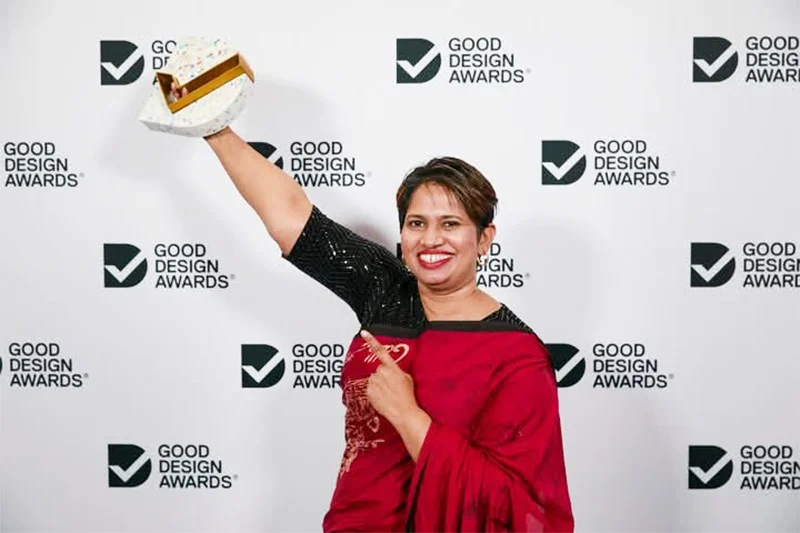
by Ifham Nizam
Dr. Nadeesha Chandrasena is an urban innovator reshaping the landscape of sustainable development. With a background that spans journalism, banking, and military engineering, she brings a unique perspective to urban planning and environmental resilience.
Her work integrates cutting-edge technology with human-centered design, ensuring that cities of the future are not only livable but also adaptive to climate change and rapid urbanisation.
In this interview with The Island, Dr. Chandrasena shares insights into her journey—from her early days in journalism to pioneering the Smart Drain Initiative, a groundbreaking infrastructure project addressing urban drainage inefficiencies. She discusses the critical role of community engagement, the challenges of balancing innovation with political realities, and the urgent need for sustainable urban solutions in Sri Lanka and beyond.
Her story is one of relentless curiosity, problem-solving, and a deep commitment to building better cities. As she puts it, “Urbanisation is inevitable; our challenge is to shape it in ways that are inclusive, sustainable, and forward-thinking.”
Urbanisation is one of the defining challenges of the 21st century, and few understand its complexities better than Dr. Chandrasena. A trailblazer in sustainable urban development, she has dedicated her career to bridging the gap between technological innovation and environmental sustainability. Through her work, she emphasises a crucial message: cities must evolve—not just grow.
From Journalism to Urban Innovation
Dr. Chandrasena’s career path is anything but conventional. Beginning as a journalist, she honed her skills in field research and community engagement, which later became instrumental in her work as an urban planner. “Journalism taught me how to listen to people’s stories and understand the realities on the ground,” she explains. This background helped her develop urban solutions rooted in real-world insights rather than abstract theories.
Her transition into urban innovation was fueled by a deep-seated passion for environmental resilience. After a stint in banking and serving in the Sri Lanka Army Corps of Engineers, she pursued town and country planning, ultimately integrating her diverse experiences to address urban challenges holistically.
The Smart Drain Initiative: A Game Changer in Urban Infrastructure
One of Dr. Chandrasena’s most groundbreaking contributions is the Smart Drain Initiative—a next-generation urban drainage system designed to combat flooding and waste accumulation. Implemented in areas like Balapola and Ambalangoda, this technology incorporates IoT-based monitoring, predictive maintenance, and automated waste filtration to enhance resilience against climate change.
“Storm drains are often neglected, but they are the foundation of a city’s flood resilience,” she says. By modernising drainage infrastructure, her initiative is setting a precedent for cities worldwide to rethink their approach to urban water management.
Livability as the Core Urban Challenge
For Dr. Chandrasena, urban planning is not just about infrastructure—it’s about people. She identifies livability as the root problem that must be addressed in city planning. “Congestion, pollution, lack of green spaces, and inefficient waste management are all symptoms of poor urban planning,” she explains. Her work focuses on designing cities that prioritise well-being, accessibility, and sustainability.
Sri Lanka, in particular, faces unique challenges due to rapid urbanisation. With cities like Colombo struggling to accommodate a massive influx of commuters, Dr. Chandrasena advocates for affordable housing solutions near economic hubs and improvements in public transportation. “A city’s economic success should not come at the cost of its residents’ quality of life,” she insists.
Technology and Community Engagement: The Future of Urban Development
Dr. Chandrasena sees technology as a powerful tool for fostering inclusive urban development. From using social media for community consultations to deploying smart infrastructure, she believes digital solutions can democratise urban planning. “We need to move beyond traditional engagement methods and empower people through accessible technology,” she says.
Her leadership philosophy reflects this inclusive approach. Through initiatives like the MyTurn Internship Platform, she mentors young professionals, encouraging them to take an active role in shaping the future of cities. “Leadership is not about authority—it’s about creating opportunities for collaboration,” she adds.
Global Urban Challenges and the Need for Collaboration
Urban issues are not confined to national borders. Dr. Chandrasena highlights the importance of global partnerships, citing the twin-city concept as a model for knowledge exchange. By pairing cities with similar challenges—such as Galle, Sri Lanka, and Penang, Malaysia—municipalities can co-create solutions that address both local and global urban challenges.
Her work has not gone unnoticed. She recently won Australia’s Good Design Award for Best in Class Engineering Design, a testament to the impact of her innovative approaches.
Call to Action for Sustainable Cities
Dr. Chandrasena’s vision for the future is clear: cities must be designed to be resilient, inclusive, and sustainable. While challenges like climate change and urban congestion persist, she remains optimistic. “There are no perfect cities—just as there are no perfect people. But by striving for practical solutions, we can make cities better for everyone.”
Her journey—from journalist to urban innovator—demonstrates that change begins with a vision and the determination to act on it. As urbanisation accelerates, her work serves as a blueprint for how cities can not only survive but thrive in an ever-evolving world.
Features
Need to appreciate SL’s moderate politics despite govt.’s massive mandate
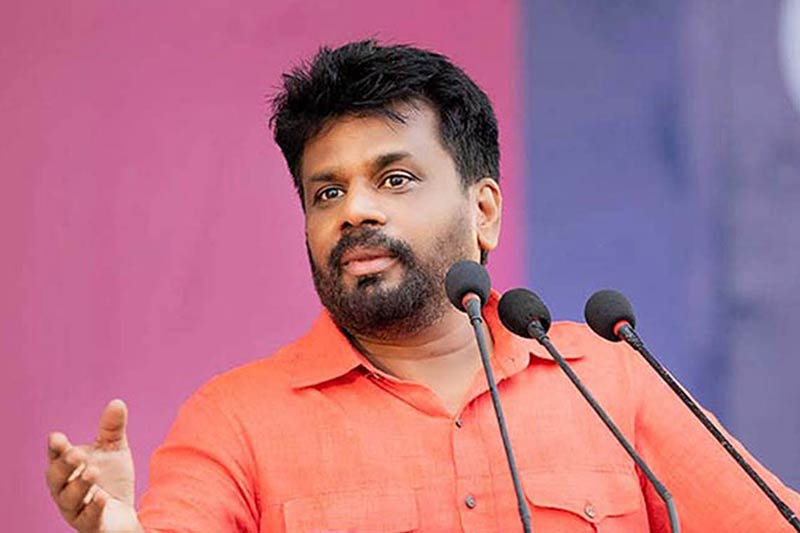
by Jehan Perera
President Donald Trump in the United States is showing how, in a democratic polity, the winner of the people’s mandate can become an unstoppable extreme force. Critics of the NPP government frequently jibe at the government’s economic policy as being a mere continuation of the essential features of the economic policy of former president, Ranil Wickremesinghe. The criticism is that despite the resounding electoral mandates it received, the government is following the IMF prescriptions negotiated by the former president instead of making radical departures from it as promised prior to the elections. The critics themselves do not have alternatives to offer except to assert that during the election campaign the NPP speakers pledged to renegotiate the IMF agreement which they have done only on a very limited basis since coming to power.
There is also another area in which the NPP government is following the example of former President Ranil Wickremesinghe. During his terms of office, both as prime minister and president, Ranil Wickremesinghe ruled with a light touch. He did not utilise the might of the state to intimidate the larger population. During the post-Aragalaya period he did not permit street protests and arrested and detained those who engaged in such protests. At the same time with a minimal use of state power he brought stability to an unstable society. The same rule-with-a-light touch approach holds true of the NPP government that has succeeded the Wickremesinghe government. The difference is that President Anura Kumara Dissanayake has an electoral mandate that President Wickremesinghe did not have in his final stint in power and could use his power to the full like President Trump, but has chosen not to.
At two successive national elections, the NPP obtained the people’s mandate, and at the second one in particular, the parliamentary elections, they won an overwhelming 2/3 majority of seats. With this mandate they could have followed the “shock and awe” tactics that are being seen in the U.S. today under President Donald Trump whose party has won majorities in both the Senate and House of Representatives. The U.S. president has become an unstoppable force and is using his powers to make dramatic changes both within the country and in terms of foreign relations, possibly irreversibly. He wants to make the U.S. as strong, safe and prosperous as possible and with the help of the world’s richest man, Elon Musk, the duo has become seemingly unstoppable in forging ahead at all costs.
EXTREME POWER
The U.S. has rightly been admired in many parts of the world, and especially in democratic countries, for being a model of democratic governance. The concepts of “checks and balances” and “separation of powers” by which one branch of the government restricts the power of the other branches appeared to have reached their highest point in the U.S. But this system does not seem to be working, at least at the present time, due to the popularity of President Trump and his belief in the rightness of his ideas and Elon Musk. The extreme power that can accrue to political leaders who obtain the people’s mandate can best be seen at the present time in the United States. The Trump administration is using the president’s democratic mandate in full measure, though for how long is the question. They have strong popular support within the country, but the problem is they are generating very strong opposition as well, which is dividing the U.S. rather than unifying it.
The challenge for those in the U.S. who think differently, and there are many of them at every level of society, is to find ways to address President Trump’s conviction that he has the right answers to the problems faced by the U.S. which also appears to have convinced the majority of American voters to believe in him. The decisions that President Trump and his team have been making to make the U.S. strong, safe and prosperous include eliminating entire government departments and dismissing employees at the Consumer Financial Protection Bureau (CFPB), Centers for Disease Control and Prevention (CDC) and the Food and Drug Administration (FDA) which were established to protect the more disadvantaged sectors of society. The targets have included USAID which has had consequences for Sri Lanka and many other disadvantaged parts of the world.
Data obtained from the Department of External Resources (ERD) reveal that since 2019, USAID has financed Sri Lankan government projects amounting to Rs. 31 billion. This was done under different presidents and political parties. Projects costing USD 20.4 million were signed during the last year (2019) of the Maithripala Sirisena government. USD 41.9 million was signed during the Gotabaya Rajapaksa government, USD 26 million during the Ranil Wickremesinghe government, and USD 18.1 million so far during the Anura Kumara Dissanayake government. At the time of the funding freeze, there were projects with the Justice Ministry, Finance Ministry, Environment Ministry and the Energy Ministry. This is apart from the support that was being provided to the private sector for business development and to NGOs for social development and good governance work including systems of checks and balances and separation of powers.
MODERATE POLITICS
The challenge for those in Sri Lanka who were beneficiaries of USAID is to find alternative sources of financing for the necessary work they were doing with the USAID funding. Among these was funding in support of improving the legal system, making digital technology available to the court system to improve case management, provision of IT equipment, and training of judges, court staff and members of the Bar Association of Sri Lanka. It also included creating awareness about the importance of government departments delivering their services in an inclusive manner to all citizens requiring their services, and providing opportunities for inter-ethnic business collaboration to strengthen the economy. The government’s NGO Secretariat which has been asked to submit a report on USAID funding needs to find alternative sources of funding for these and give support to those who have lost their USAID funding.
Despite obtaining a mandate that is more impressive at the parliamentary elections than that obtained by President Trump, the government of President Anura Kumara Dissanayake has been more moderate in its efforts to deal with Sri Lanka’s problems, whether in regard to the economy or foreign relations. The NPP government is trying to meet the interests of all sections of society, be they the business community, the impoverished masses, the civil society or the majority and minority ethnic and religious communities. They are trying to balance the needs of the people with the scarce economic resources at their disposal. The NPP government has demanded sacrifice of its own members, in terms of the benefits they receive from their positions, to correspond to the economic hardships that the majority of people face at this time.
The contrast between the governance styles of President Trump in the U.S. and President Dissanayake in Sri Lanka highlights the different paths democratic leaders can take. President Trump is attempting to decisively reshape the U.S. foreign policy, eliminating entire government departments and overwhelming traditional governance structures. The NPP government under President Dissanayake has sought a more balanced, inclusive path by taking steps to address economic challenges and governance issues while maintaining stability. They are being tough where they need to be, such as on the corruption and criminality of the past. They need to be supported as they are showing Sri Lankans and the international community how a government can use its mandate without polarising society and thereby securing the consensus necessary for sustainable change.
-

 Business3 days ago
Business3 days agoSri Lanka’s 1st Culinary Studio opened by The Hungryislander
-
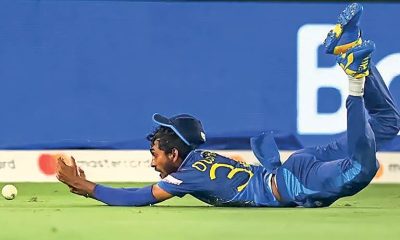
 Sports4 days ago
Sports4 days agoHow Sri Lanka fumbled their Champions Trophy spot
-
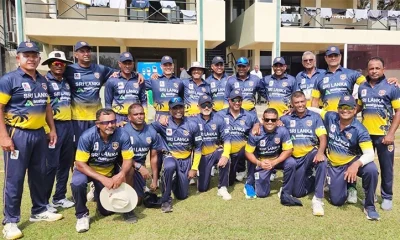
 Sports7 days ago
Sports7 days agoSri Lanka face Australia in Masters World Cup semi-final today
-

 News7 days ago
News7 days agoCourtroom shooting: Police admit serious security lapses
-
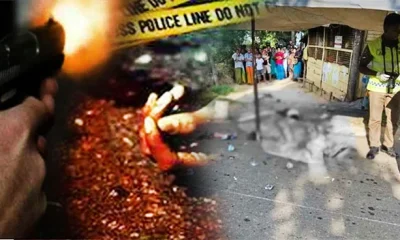
 News7 days ago
News7 days agoUnderworld figure ‘Middeniye Kajja’ and daughter shot dead in contract killing
-
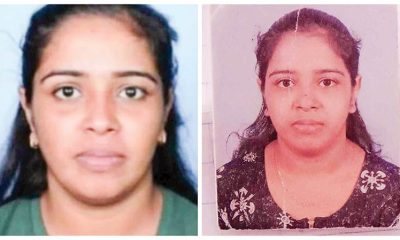
 News6 days ago
News6 days agoKiller made three overseas calls while fleeing
-
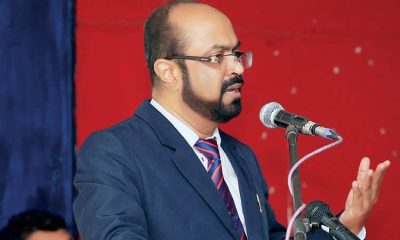
 News5 days ago
News5 days agoSC notices Power Minister and several others over FR petition alleging govt. set to incur loss exceeding Rs 3bn due to irregular tender
-
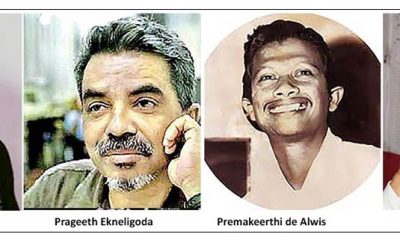
 Features4 days ago
Features4 days agoThe Murder of a Journalist

